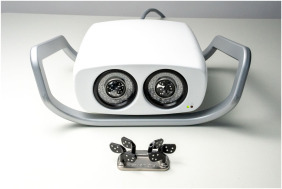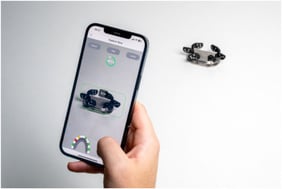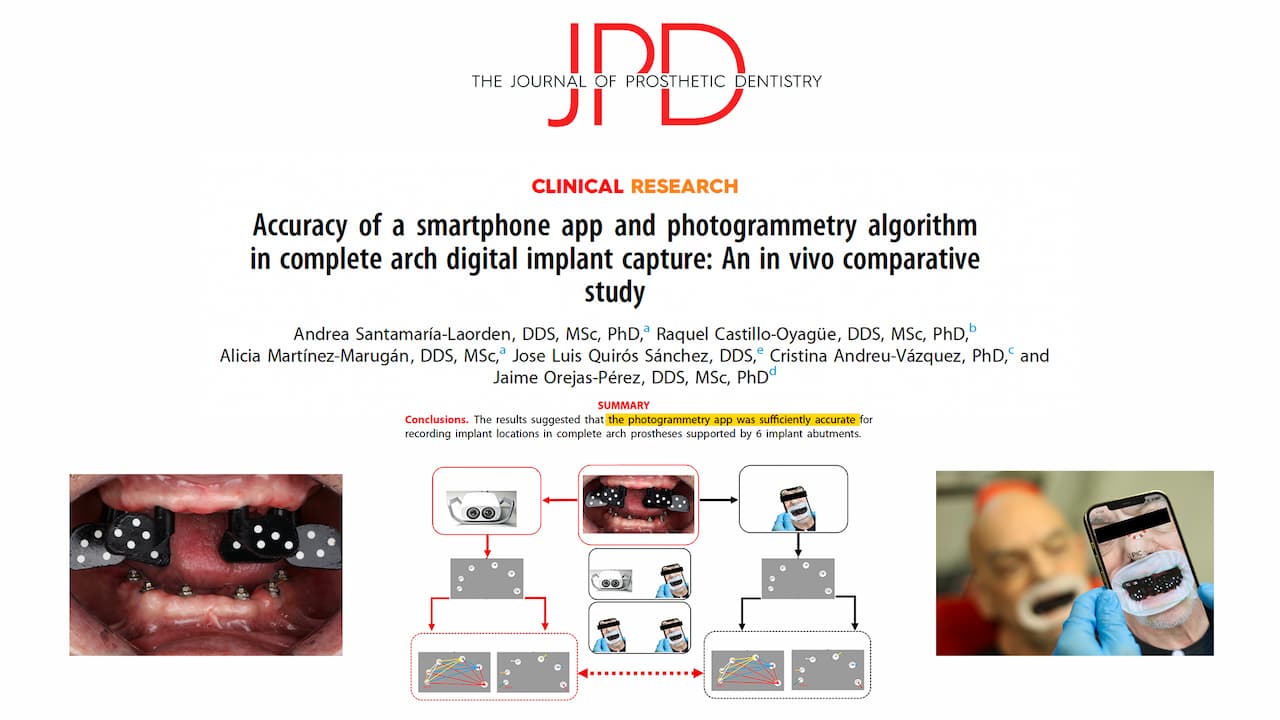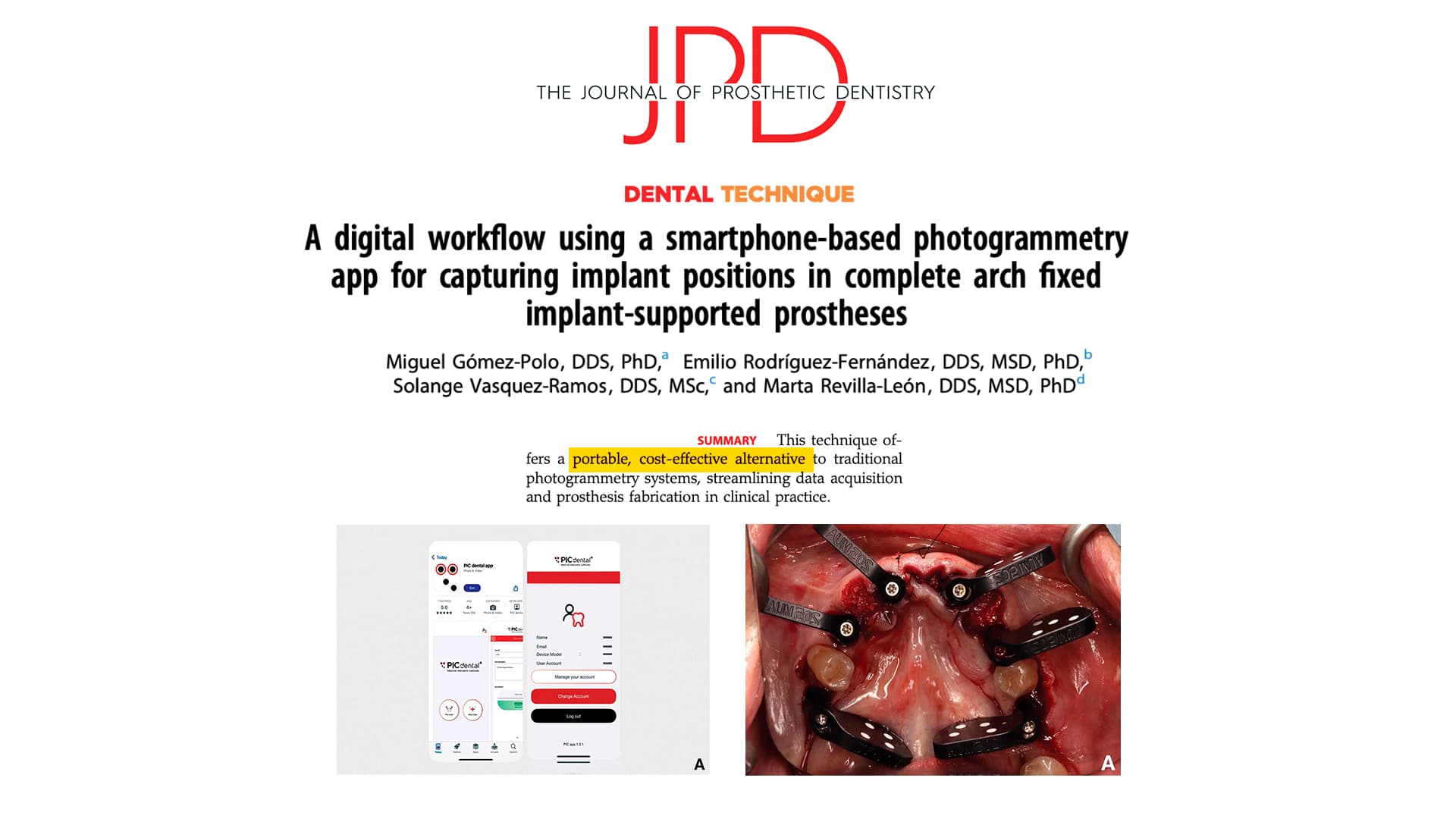For the first time in the history of dentistry, the precision of photogrammetry for full arch restorations is in the palm of your hand.
PIC app—the world's first commercially available smartphone-based dental photogrammetry application—is already transforming implant captures in practices across the globe. This groundbreaking technology is democratizing access to high-precision implant measurement, making what was once exclusive to high-volume practices available to every dental professional with a compatible smartphone.
A new landmark study by Dr. Andrea Santamaría-Laorden and her team at the European University of Madrid has now confirmed what pioneering practitioners worldwide have already been experiencing since its release in March 2025: PIC app delivers clinical accuracy that is comparable to PIC system at a fraction of the cost.


The results showed only minor differences in the linear measurements obtained with each device, while angular measurement precision was very similar between the two. These deviations were deemed clinically insignificant by the research team and were not found to negatively impact the outcome.

The study designed by Dr. Santamaría-Laorden and her team
The research team put both PIC system and PIC app through rigorous testing, performing 30 full arch captures on a 6-implant model with both technologies. The angles and distances of each measurement were compared to a reference measurement done by a coordinate measuring machine (CMM) to analyze their trueness and precision.

Reference cast with PIC transfers screwed onto implant abutments for recording and setup with the corresponding implant positions
The mean linear difference between the captures made with PIC system and PIC app was just 12.70 μm. Mean angular precision was virtually identical, with a difference of less than one-tenth of a degree.

Overall measurement discrepancies (trueness) for PIC app and PIC system. A: Linear measurements. B: Angular measurements
Accuracy within everyone's reach
Dr. Santamaría-Laorden and her team's findings confirm a new reality: world-class photogrammetry is no longer limited to large practices with high volumes of full arch restorations.
The comparable accuracy offered by PIC app represents a step forward for the dental community. It provides a cost-effective and accessible alternative to gold standard dedicated photogrammetry devices such as PIC system, PIC system Gravity, or PIC system Station.
This innovation helps democratize access to the benefits of dental photogrammetry for doctors and technicians with limited resources or those just beginning their clinical practice or lab.

Representation of the captures taken with the PIC app from the right and left view at various angles
The study highlights PIC app as a viable, affordable alternative to PIC system for capturing implant positions, particularly due to its accessibility. Like any precision tool, PIC app delivers the best results with proper technique, which differs from PIC system's Instant Capture. That's why PIC dental provides comprehensive PIC app training workshops and support to ensure you're capturing with confidence from day one.
For high-volume practices delivering hundreds of cases annually, the PIC system remains the best long-term investment providing the ultimate gold standard accuracy as validated by over 40 scientific publications since its release in 2010.
We are excited about the results of this first study on PIC app and look forward to further scientific research, particularly studies involving in vivo conditions.
The future of dental photogrammetry now fits in your pocket. As more practices worldwide join the PIC app revolution, we're committed to pushing the boundaries of what's possible. The best part? You can start transforming your implant workflow today. Get your PIC app and PIC cloud subscription and enjoy precise implant capture.
SOURCE
-
Santamaría-Laorden, A., Martínez Marugán, A., Andreu-Vázquez, C., & Orejas-Pérez, J. (2025). Complete arch implant capture using a photogrammetry algorithm and smartphone app: An in vitro study. Journal of Dentistry. Volume 161, 2025, 105969. https://doi.org/10.1016/j.jdent.2025.105969


